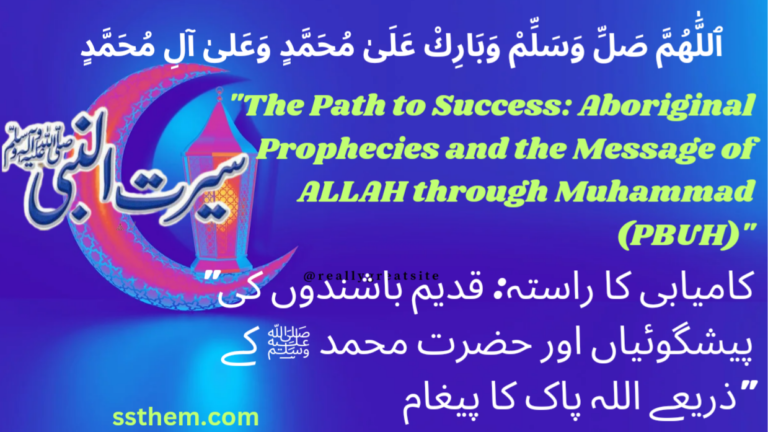کوہِ سینا (جبلِ موسیٰ) – تاریخ، مذہبی اہمیت اور سیاحتی دلکشی
کوہِ سینا، جسے جبلِ موسیٰ بھی کہا جاتا ہے، مصر کے علاقے سینائی (Sinai Peninsula) میں واقع ایک عظیم اور مقدس پہاڑ ہے۔ یہ پہاڑ صرف جغرافیائی لحاظ سے ہی نہیں بلکہ مذہبی و روحانی پہلو سے بھی بےحد اہمیت رکھتا ہے۔ یہ مقام دنیا کے تین بڑے الہامی مذاہب – اسلام، یہودیت اور عیسائیت – کے ماننے والوں کے لیے مقدس حیثیت رکھتا ہے۔
اسلامی روایات کے مطابق یہی وہ پہاڑ ہے جہاں حضرت موسیٰ علیہ السلام نے اللہ تعالیٰ سے کلام کیا اور انہیں تورات عطا کی گئی۔ یہ پہاڑ تاریخ، مذہب اور سیاحت کا ایک حسین امتزاج ہے، جہاں ہر سال ہزاروں زائرین اور سیاح آتے ہیں۔ 
کوہِ سینا کا جغرافیائی محلِ وقوع
- کوہِ سینا مصر کے شمال مشرقی حصے میں واقع ہے۔
- اس کی بلندی تقریباً 2,285 میٹر (7,497 فٹ) ہے۔
- یہ پہاڑ صحرائی مگر پتھریلے علاقے میں واقع ہے، جہاں دن کو دھوپ تیز اور رات کو ٹھنڈک شدید محسوس ہوتی ہے۔
- پہاڑ کے اردگرد تاریخی خانقاہیں، چرچز اور قدیم راستے موجود ہیں جن سے گزر کر زائرین چوٹی تک پہنچتے ہیں۔
اسلام میں کوہِ سینا کی اہمیت
قرآن میں ذکر
قرآن مجید میں کوہِ سینا کا ذکر “طورِ سینا” کے نام سے آیا ہے:
“وَالتِّينِ وَالزَّيْتُونِ * وَطُورِ سِينِينَ” (سورۃ التین)
یہ آیت اس پہاڑ کی عظمت کو ظاہر کرتی ہے، جہاں اللہ تعالیٰ نے حضرت موسیٰ علیہ السلام کو نبوت اور وحی سے نوازا۔
حضرت موسیٰ علیہ السلام اور کوہِ سینا
اسلامی تعلیمات کے مطابق حضرت موسیٰ علیہ السلام نے اسی پہاڑ پر چالیس دن اور رات عبادت کی اور اللہ تعالیٰ سے ہمکلامی کی۔ یہی وہ جگہ ہے جہاں انہیں تورات دی گئی۔ اس لیے مسلمان اس مقام کو نہایت مقدس سمجھتے ہیں اور زیارت کے لیے آتے ہیں۔
یہودیت میں کوہِ سینا کی اہمیت
یہودی عقائد میں کوہِ سینا کو بنیادی اہمیت حاصل ہے۔ ان کے مطابق:
- حضرت موسیٰ علیہ السلام کو یہی پر Ten Commandments (دس احکام) ملے۔
- یہ احکام یہودی مذہب کے اخلاقی اور شرعی قوانین کی بنیاد ہیں۔
- یہ پہاڑ “Mount Sinai” کے نام سے ان کی مذہبی کتابوں میں بار بار ذکر ہوا ہے۔
عیسائیت میں کوہِ سینا کی اہمیت
عیسائیوں کے نزدیک بھی یہ پہاڑ مقدس ہے کیونکہ ان کے عقیدے کے مطابق یہی مقام خدا اور حضرت موسیٰ علیہ السلام کے درمیان پیغام رسانی کا گواہ ہے۔
چرچ آف سینٹ کیتھرین
پہاڑ کے دامن میں واقع St. Catherine’s Monastery دنیا کے قدیم ترین گرجا گھروں میں شمار ہوتی ہے۔ یہ یونیسکو کے عالمی ورثے (UNESCO World Heritage) میں شامل ہے اور ہر سال ہزاروں عیسائی زائرین یہاں آتے ہیں۔
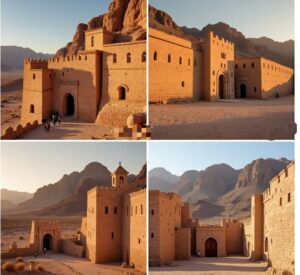
تاریخی پس منظر اور روایات
- کہا جاتا ہے کہ حضرت موسیٰ علیہ السلام نے اسی پہاڑ پر جلا ہوا درخت دیکھا تھا، جہاں سے انہیں پہلی بار وحی ملی۔
- اس مقام پر حضرت موسیٰ علیہ السلام نے اپنی قوم کے لیے اللہ تعالیٰ سے ہدایت اور احکام حاصل کیے۔
- یہ پہاڑ قدیم انبیاء کی عبادت اور اللہ سے قربت کی یادگار سمجھا جاتا ہے۔
کوہِ سینا پر سیاحت اور زیارت
زائرین کی آمد
- ہر سال دنیا بھر سے ہزاروں مسلمان، عیسائی اور یہودی اس پہاڑ پر زیارت کے لیے آتے ہیں۔
- زیادہ تر لوگ رات کو چڑھائی کرتے ہیں تاکہ صبح طلوعِ آفتاب کا منظر دیکھ سکیں۔
دلچسپ مقامات
- St. Catherine’s Monastery
- حضرت موسیٰ علیہ السلام کی یادگار چٹان
- قدیم راستے (Paths of Moses)
پہاڑ پر طلوعِ آفتاب
زائرین کے مطابق پہاڑ کی چوٹی پر طلوعِ آفتاب کا منظر ایک روحانی تجربہ ہے۔ لوگ اسے اپنی زندگی کے یادگار ترین لمحات میں شمار کرتے ہیں۔
روحانی پہلو
کوہِ سینا صرف ایک تاریخی مقام نہیں بلکہ ایک روحانی علامت ہے۔ یہاں آ کر انسان کو اللہ تعالیٰ کی عظمت اور بندگی کی یاد تازہ ہوتی ہے۔ زائرین اس مقام پر نماز پڑھتے ہیں، دعا کرتے ہیں اور سکون محسوس کرتے ہیں۔
جدید دور میں کوہِ سینا
- مصر کی حکومت نے کوہِ سینا کو سیاحتی مرکز کے طور پر محفوظ بنایا ہے۔
- یہاں کے مقامی لوگ زائرین کو سہولیات فراہم کرتے ہیں۔
- یہ مقام مذہبی سیاحت کے ساتھ ساتھ تاریخی اور قدرتی سیاحت کے لیے بھی مشہور ہے۔
ماہرینِ تاریخ اور سیاحوں کی رائے
- ماہرین کے مطابق کوہِ سینا انسانی تاریخ کے سب سے اہم مذہبی مقامات میں سے ایک ہے۔
- سیاحوں کے مطابق یہاں کی فضا سکون بخش اور روحانی تجربہ فراہم کرتی ہے۔
کوہِ سینا (جبلِ موسیٰ) ایک ایسا مقام ہے جو بیک وقت تاریخ، مذہب اور روحانیت کا حسین امتزاج ہے۔ یہ پہاڑ ہمیں حضرت موسیٰ علیہ السلام کی قربانی، عبادت اور اللہ تعالیٰ کے ساتھ تعلق کی یاد دلاتا ہے۔
چاہے آپ مذہبی زائر ہیں یا قدرتی مناظر کے شوقین سیاح، کوہِ سینا کا سفر آپ کے لیے ایک یادگار اور روحانی تجربہ ہوگا۔
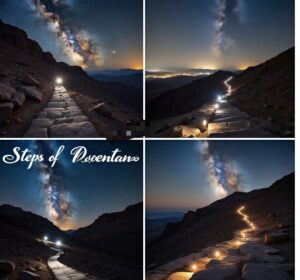
Mount Sinai (Jabal Musa) – History, Religious Significance, and Spiritual Tourism
Mount Sinai, also known as Jabal Musa (Mountain of Moses), is one of the most sacred and historically significant mountains in the world. Located in the Sinai Peninsula of Egypt, this mountain is revered by followers of the three major Abrahamic religions: Islam, Judaism, and Christianity.
According to Islamic traditions, it is the place where Prophet Moses (Musa, peace be upon him) spoke directly with God (Allah) and received the divine commandments. For Jews, this is the site where the Torah and the Ten Commandments were revealed. Christians also regard it as a holy site due to its biblical references and ancient monasteries.
Today, Mount Sinai remains not only a religious pilgrimage site but also a fascinating destination for historians, travelers, and spiritual seekers.
Geographic Location of Mount Sinai
- Mount Sinai is situated in the southern Sinai Peninsula of Egypt, between the Red Sea and the Mediterranean Sea.
- It rises to a height of approximately 2,285 meters (7,497 feet) above sea level.
- The surrounding landscape is rugged, rocky, and desert-like, with steep valleys and dry riverbeds.
- Despite its harsh environment, the area is rich in historical and religious heritage, attracting thousands of visitors each year.
Mount Sinai in Islam
Quranic Reference
The Qur’an directly refers to Mount Sinai as Ṭūr Sīnā (طور سینا):
“By the fig and the olive, and Mount Sinai” (Surah At-Tin, 95:1-2)
This verse highlights the sanctity of the place where Prophet Musa (peace be upon him) received revelation and spoke to Allah.
Prophet Musa’s Experience
According to Islamic belief, Prophet Musa (peace be upon him):
- Spent forty days and nights on Mount Sinai in prayer and worship.
- Spoke directly with Allah at this sacred site.
- Was given the Tawrat (Torah) as divine guidance for his people.
For Muslims, Mount Sinai remains a symbol of divine communication, faith, and submission to Allah.
Mount Sinai in Judaism
For Jews, Mount Sinai holds immense spiritual importance because it is believed to be the exact place where:
- Prophet Moses received the Ten Commandments.
- These commandments became the foundation of Jewish law, morality, and religious practice.
- The covenant between God and the Israelites was reaffirmed.
In Jewish tradition, Mount Sinai is often described as the birthplace of their faith, making it central to their history and identity.
Mount Sinai in Christianity
Christians also consider Mount Sinai to be a holy place, as it is mentioned several times in the Bible. According to Christian tradition:
- This is where God revealed His law to Moses.
- It symbolizes the connection between humanity and the divine.
St. Catherine’s Monastery
At the base of Mount Sinai lies the Monastery of St. Catherine, one of the world’s oldest Christian monasteries.
- Built in the 6th century CE under the order of Emperor Justinian.
- It contains one of the largest collections of Christian manuscripts and icons.
- Recognized as a UNESCO World Heritage Site, it continues to be an active monastery and a major pilgrimage site.
Historical Background and Traditions
- Many traditions state that Prophet Musa first encountered the Burning Bush at Mount Sinai, where God spoke to him for the first time.
- It was here that Musa led the Israelites after their exodus from Egypt.
- The giving of the Ten Commandments is regarded as one of the most important spiritual moments in human history.
Mount Sinai thus stands as a symbol of faith, divine law, and human responsibility toward God.
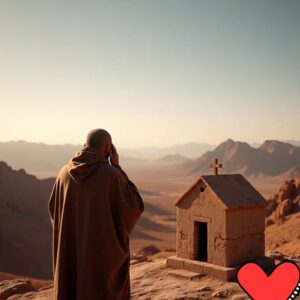
Pilgrimage and Tourism at Mount Sinai
The Journey of Pilgrims
- Thousands of pilgrims and tourists visit Mount Sinai every year.
- Most travelers begin their ascent at night, reaching the summit in time to witness the sunrise.
- The climb can take 2–4 hours, depending on the route chosen.
Popular Routes to the Summit
- Camel Path (Siket El Bashait): A longer but easier path, often used by tourists.
- Steps of Repentance: A steeper and more challenging path consisting of about 3,750 stone steps, built by monks centuries ago.
Attractions Along the Way
- The Chapel of the Holy Trinity at the summit, built in the 1930s.
- The Rock of Moses, believed to be the stone struck by Musa to bring forth water.
- St. Catherine’s Monastery, an essential stop for religious and historical exploration.
Spiritual Aspects of Mount Sinai
Mount Sinai is not just a mountain; it is a spiritual symbol. For centuries, it has represented:
- Divine revelation and God’s direct guidance to humanity.
- A place of meditation, prayer, and reflection.
- The journey of faith and the trials faced by the prophets.
Visitors often describe their experience as deeply spiritual, feeling a sense of peace and closeness to God while standing at the summit.
Mount Sinai in the Modern Era
- Egypt has invested heavily in preserving Mount Sinai as both a religious and tourist destination.
- Infrastructure improvements, guided tours, and preservation projects have made it easier for people to visit.
- It remains an important site for interfaith dialogue, bringing together Muslims, Jews, and Christians in shared reverence for its history.
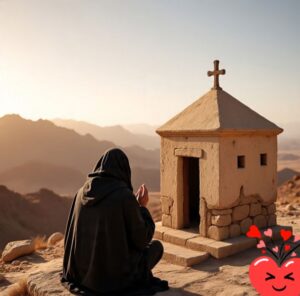
Scholars’ and Travelers’ Perspectives
- Historians view Mount Sinai as one of the most significant landmarks in world religious history.
- Archaeologists have long debated the exact historical timeline, but its religious importance remains unquestioned.
- Travelers describe the climb and sunrise experience as life-changing, offering both physical challenge and spiritual awakening.
Mount Sinai (Jabal Musa) is more than just a towering peak in the deserts of Egypt. It is a place where history, faith, and spirituality converge. Revered in Islam, Judaism, and Christianity, this mountain continues to inspire millions of people across the globe.
For Muslims, it is the site of Prophet Musa’s communication with Allah. For Jews, it is the birthplace of the Ten Commandments. For Christians, it is a sacred location tied to biblical revelation.
Whether you are a religious pilgrim seeking divine connection, a historian exploring ancient traditions, or a traveler chasing breathtaking landscapes, Mount Sinai offers an unforgettable journey—both physical and spiritual.


